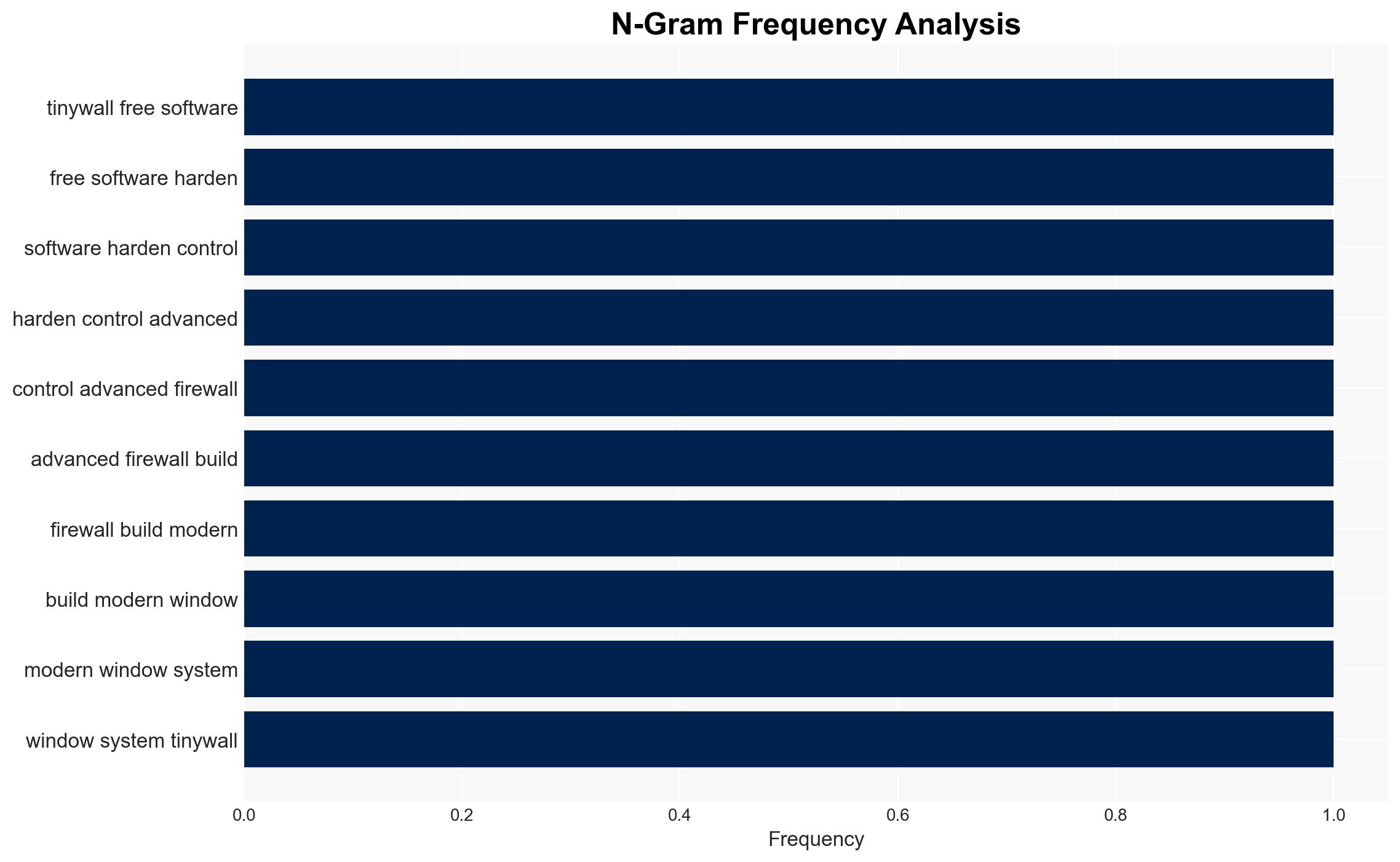TinyWall 341 – Neowin
Published on: 2025-04-06
Intelligence Report: TinyWall 341 – Neowin
1. BLUF (Bottom Line Up Front)
TinyWall 341 represents a significant advancement in firewall technology for modern Windows systems. It offers enhanced security features without the typical user interruptions associated with firewall software. The software’s ability to block numerous malicious threats while maintaining user-friendly operation makes it a valuable tool for both personal and professional environments. Immediate consideration for integration into existing cybersecurity frameworks is recommended.
2. Detailed Analysis
The following structured analytic techniques have been applied for this analysis:
General Analysis
TinyWall 341 is designed to enhance the Windows firewall by providing a robust defense against a wide range of cyber threats, including trojans, viruses, and worms. Its unique features, such as the absence of pop-up notifications and easy exception rule management, distinguish it from other firewall solutions. The software’s open-source nature allows for continuous improvement and transparency, which is crucial for trust in cybersecurity solutions.
Key features include:
- Automatic learning mode for seamless integration.
- Firewall tamper protection and password lockdown settings.
- Support for IPv6 and detailed connection monitoring.
- Enhanced user interface with multiple configuration options.
3. Implications and Strategic Risks
The deployment of TinyWall 341 can significantly reduce the risk of unauthorized access and data breaches. However, the reliance on Windows firewall filtering could present vulnerabilities if not regularly updated. The software’s open-source nature, while beneficial for transparency, may also expose it to exploitation if not properly managed. Organizations must ensure regular updates and monitor for potential vulnerabilities.
Strategic risks include potential incompatibility with legacy systems and the need for user training to maximize effectiveness. The software’s reliance on user input for exception management could lead to human error if not adequately supervised.
4. Recommendations and Outlook
Recommendations:
- Integrate TinyWall 341 into existing cybersecurity protocols to enhance network protection.
- Conduct regular training sessions for users to ensure proper use and management of the software.
- Establish a routine update and monitoring process to mitigate potential vulnerabilities.
- Consider regulatory updates to accommodate the integration of advanced firewall solutions like TinyWall.
Outlook:
Best-case scenario: Widespread adoption of TinyWall 341 leads to a significant decrease in cyber threats and improved network security across sectors.
Worst-case scenario: Failure to update and manage the software results in new vulnerabilities being exploited, leading to data breaches.
Most likely outcome: Incremental improvements in cybersecurity as organizations adopt TinyWall 341 and integrate it with existing systems, leading to enhanced protection with minimal disruption.
5. Key Individuals and Entities
The report does not mention specific individuals or organizations by name. However, it is important for stakeholders to consider collaboration with cybersecurity experts and software developers to maximize the benefits of TinyWall 341.




